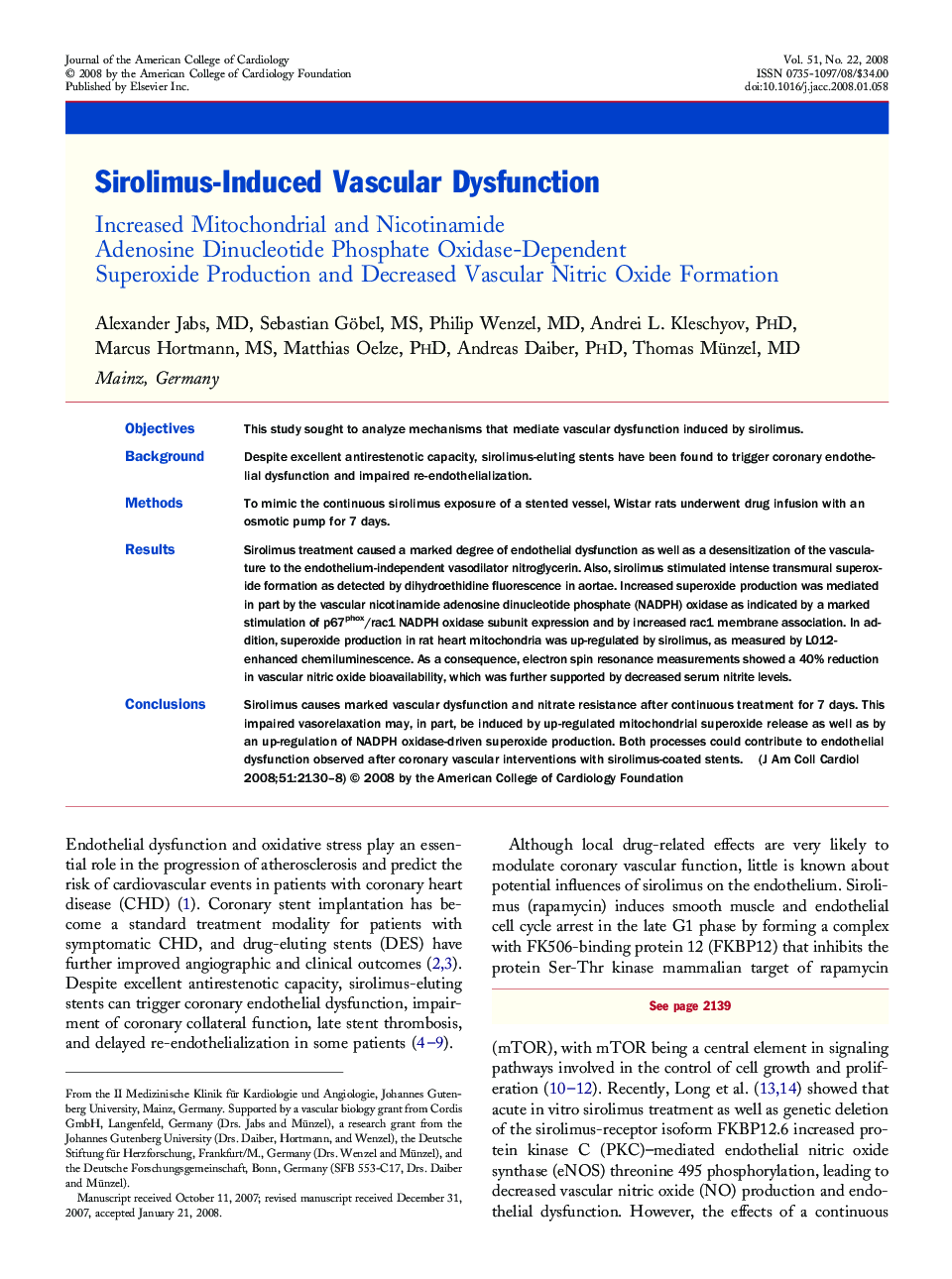| Article ID | Journal | Published Year | Pages | File Type |
|---|---|---|---|---|
| 2953805 | Journal of the American College of Cardiology | 2008 | 9 Pages |
ObjectivesThis study sought to analyze mechanisms that mediate vascular dysfunction induced by sirolimus.BackgroundDespite excellent antirestenotic capacity, sirolimus-eluting stents have been found to trigger coronary endothelial dysfunction and impaired re-endothelialization.MethodsTo mimic the continuous sirolimus exposure of a stented vessel, Wistar rats underwent drug infusion with an osmotic pump for 7 days.ResultsSirolimus treatment caused a marked degree of endothelial dysfunction as well as a desensitization of the vasculature to the endothelium-independent vasodilator nitroglycerin. Also, sirolimus stimulated intense transmural superoxide formation as detected by dihydroethidine fluorescence in aortae. Increased superoxide production was mediated in part by the vascular nicotinamide adenosine dinucleotide phosphate (NADPH) oxidase as indicated by a marked stimulation of p67phox/rac1 NADPH oxidase subunit expression and by increased rac1 membrane association. In addition, superoxide production in rat heart mitochondria was up-regulated by sirolimus, as measured by L012-enhanced chemiluminescence. As a consequence, electron spin resonance measurements showed a 40% reduction in vascular nitric oxide bioavailability, which was further supported by decreased serum nitrite levels.ConclusionsSirolimus causes marked vascular dysfunction and nitrate resistance after continuous treatment for 7 days. This impaired vasorelaxation may, in part, be induced by up-regulated mitochondrial superoxide release as well as by an up-regulation of NADPH oxidase-driven superoxide production. Both processes could contribute to endothelial dysfunction observed after coronary vascular interventions with sirolimus-coated stents.
